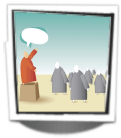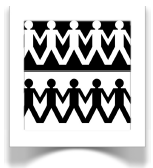Is it too simple to say it just works? Perhaps, but the world is full of sub-par products that have outsold better made items that didn't have the benefit of advertising. Maybe you're curious to find out about the mechanics behind how both major corporation advertising and even annoying infomercials seem to be effective.
Reach

If you were Nabisco or Coca-Cola and looking to hire a
Madison Avenue advertising firm, one of the first terms you might hear would be this. Simply put, reach is the percentage of a given target population that is exposed to your advertising at least once. These questions illustrate reach: How can you expect a customer to buy your product if they don't know it exists? How can a store or restaurant expect business if the members of the community don't know it is open?
Frequency

This is the next cornerstone of advertising, and it is always mentioned at the same time as reach. Frequency is the number of times any one person of the target population is exposed to your advertising message. Entrepreneur reports that it takes three or more exposures to an advertising message before consumers take action.
Target Marketing
Sure, you could advertise to the whole world blindly if you had enough money, but would that be effective? Maybe it's better to spend your time (and money) going after those who are most likely to purchase your product. Smart companies can tell you who uses their product in terms of:

 |
Demographics
These are the measurable statistics of a group of people. What are the age ranges of our customers? Where do they live? How much do they earn on average? How many credit cards do they hold? Are they male or female? Of course, not every customer is the same, but a beer company might know they are most popular in Alabama & Florida with males that are 20 to 35 in age. They could also find out they are most popular in Alaska with males over 50. A laundry soap brand might know they are popular in rural areas with women over 40 and in city areas with younger males and females equally.
Psychographics
These are the intangible characteristics of a population of consumers. The traits might not be measurable in quantity, but they can be categorized in psychological terms. A clothing store might know its customers are "conservative" or "trendy." A bank might cater some savings products toward the "frugal and thrifty" while the in-house investment department might identify its customers as "mild risk takers". Apple might direct ads for one product at "early adopting consumers" and others towards the "tech-savvy." Maybe they can reposition their ads at a later time to attract cautious people who are intimidated by technology. |
If a company can identify the target market for its product, reach those potential consumers and effectively advertise to them frequently enough, then they should experience success in the marketplace.